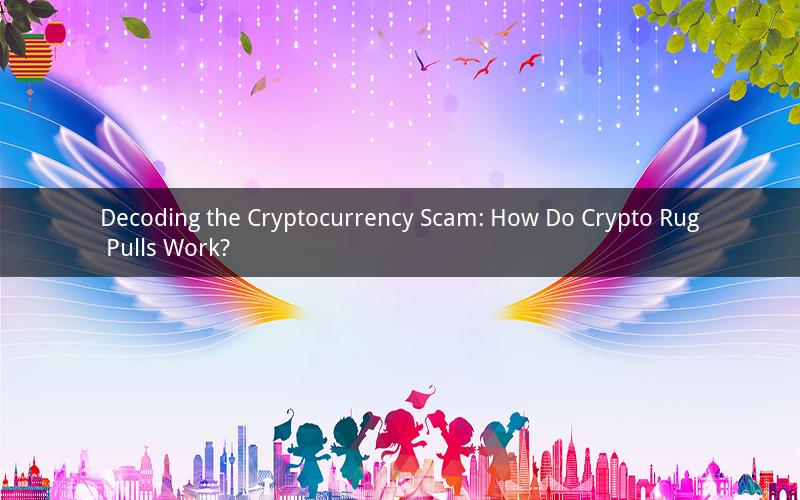
The cryptocurrency market, with its rapid growth and fluctuating prices, has become a playground for both legitimate investors and fraudulent scammers. One of the most notorious scams in this space is known as a "rug pull." This article aims to shed light on how crypto rug pulls work, what signs to look for, and how to protect yourself from falling victim to such scams.
How Do Crypto Rug Pulls Work?
Crypto rug pulls are a type of scam where scammers create a cryptocurrency project, often through an Initial Coin Offering (ICO) or a decentralized application (DApp), and then drain all the funds raised before the project's failure. Here's how it typically works:
1. Scammers launch a cryptocurrency project with a catchy name and a promising whitepaper.
2. They create a buzz around the project, attracting investors through social media, forums, and other online platforms.
3. They organize an ICO or launch a DApp, offering tokens to investors in exchange for cryptocurrencies.
4. As the project gains traction, the price of the tokens starts to rise, enticing more investors.
5. Once enough funds have been raised, the scammers drain the project's wallet, leaving the investors with worthless tokens.
6. The project then ceases to exist, leaving investors with substantial financial losses.
What Are the Signs of a Crypto Rug Pull?
Identifying a potential rug pull is crucial in protecting yourself from falling victim to this scam. Here are some common signs:
1. Hype and unrealistic promises: Scammers often create a sense of urgency and hype around the project, making exaggerated claims about its potential success.
2. Lack of information: A project with little to no information, such as an unexplained whitepaper or a team with no background, may be a red flag.
3. Inactive or anonymous team members: Scammers may use fake names or avoid revealing their identity, making it difficult to verify their credibility.
4. Excessive social media activity: An unusually high level of social media activity, particularly from anonymous accounts, may indicate a scam.
5. Rapid token price increase: A sudden surge in the token's price, without any corresponding increase in the project's value or use case, could be a sign of manipulation.
How to Protect Yourself from Crypto Rug Pulls
To protect yourself from crypto rug pulls, follow these tips:
1. Conduct thorough research: Before investing in a cryptocurrency project, research the team, the whitepaper, and the project's potential use case.
2. Avoid excessive hype: Stay skeptical of projects promising overnight riches or unrealistic growth.
3. Diversify your investments: Don't put all your eggs in one basket; spread your investments across various projects and cryptocurrencies.
4. Stay informed: Keep up to date with the latest news and trends in the cryptocurrency market to identify potential red flags.
5. Use reputable exchanges and wallets: Choose well-established exchanges and wallets for your cryptocurrency transactions to minimize the risk of fraud.
5 Related Questions and Answers:
1. Q: Can crypto rug pulls be prevented entirely?
A: While it's impossible to prevent rug pulls entirely, staying informed and conducting thorough research can significantly reduce your risk.
2. Q: Are all initial coin offerings (ICOs) scams?
A: No, not all ICOs are scams. Many legitimate projects use ICOs to raise funds. However, be cautious and conduct due diligence before investing.
3. Q: Can I recover my funds if I fall victim to a crypto rug pull?
A: Recovering funds from a rug pull can be challenging. While some law enforcement agencies and cryptocurrency communities may offer assistance, it's not guaranteed.
4. Q: Are there any regulations to prevent crypto rug pulls?
A: Regulations vary by country, but some jurisdictions have implemented measures to monitor and regulate cryptocurrency projects. Staying aware of these regulations can help you make informed decisions.
5. Q: Can I trust crypto communities for advice on rug pulls?
A: Crypto communities can provide valuable insights and warnings, but their members have varying levels of expertise. Always verify the information and consult reputable sources before making investment decisions.